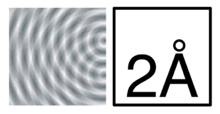The Design of Design Links
Understanding the Kano Model — A Tool for Sophisticated Designers by Jared Spool
To be honest, I describe this model more frequently than I can remember the name correctly (apologies to Noriaka Kano; I will try my best to be better). The two-axis model can also be easily confused with a SWOT analysis, but it’s not that.
Jared makes a very succinct case on the value and quick application of the Kano Model, and it is useful when thinking about prioritization and what to explore for future design thinking.
My question is whether a short-sighted adherence to the “up and to the right” of Performance Payoff, which highly favors new and noticeable features, privileges allocating resources and focus on adding new and shiny rather than making sure what’s already there works well (the Basic Expectations), or if the new and shiny works well with the Slightly Older and Less Shiny but Established. Jared uses the example of Google Docs, and that’s what raises my question: we know that the incentives are for Google employees to propose new features and endeavors rather than fix and polish existing things. Is that sustainable?
Dark Patterns at Scale: Findings from a Crawl of 11K Shopping Websites from the Princeton Web Transparency & Accountability Project
This is the kind of vital and basic research you’re not likely to see from corporations. Though I’m not sure all of these meet the same criteria as what’s outlined at DarkPatterns.org (for instance, appealing to a sense of economy of scarcity is manipulative, but not a dark pattern), it’s amazing how many companies are based on basically shady manipulations that aren’t really to your benefit.
Accot-Zhai Steering Law: Implications for UI Design by Page Laubheimer
Saw the summary, thought, “That sounds like Fitt’s Law”, was immediately gratified by the first sentence of the article. That’s good design!
The concept of a “tunnel” in user navigation through menus and other interface elements is a fascinating one, and this article makes a good case for the real-world implications for when to use hierarchical menus, “mega menus”, and other items that ask precision of the user. I personally feel like less of a loaf-handed lump after reading this.
